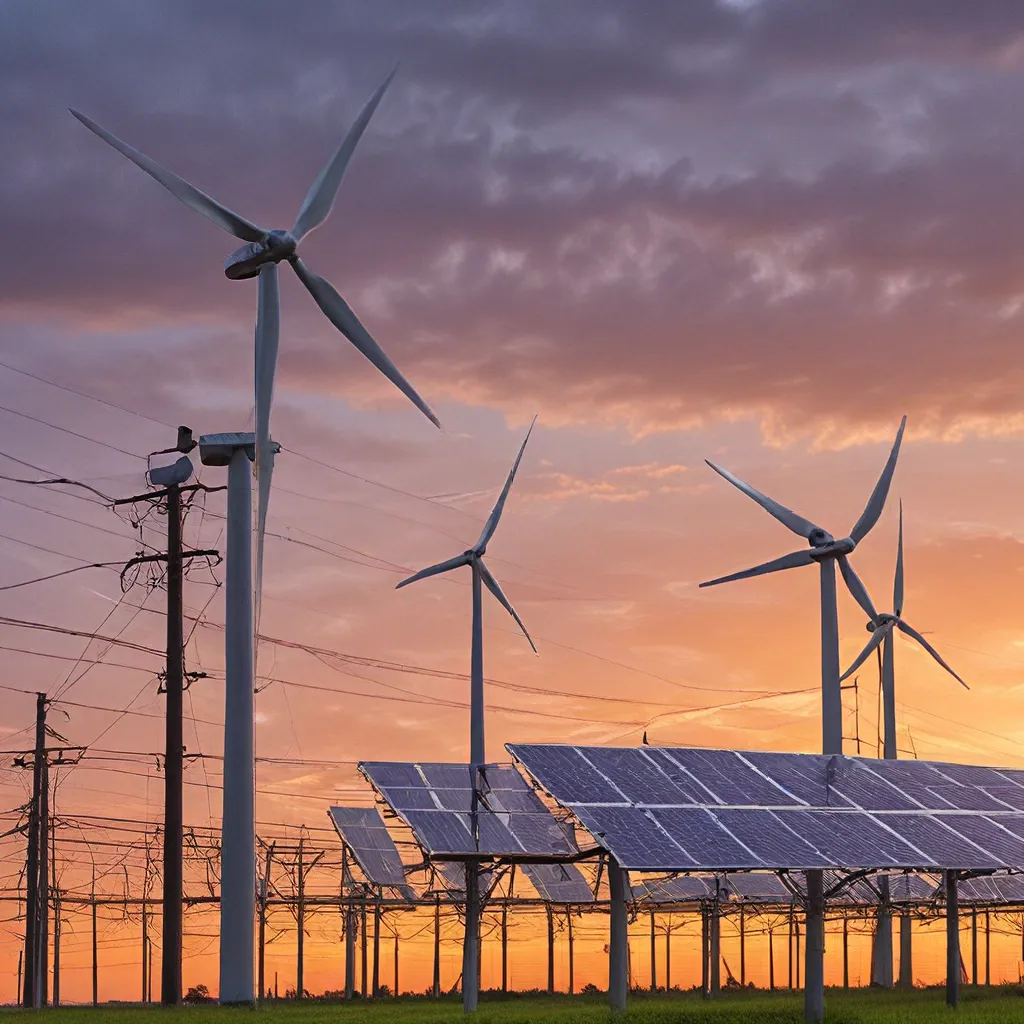
The Conductor’s Conundrum: Modernizing Our Aging Energy Infrastructure
Imagine a world where the lights in our homes were powered by the sun’s radiant glow or the gentle breeze rustling through the trees. Sounds like a utopian dream, doesn’t it? Well, my friends, this vision is rapidly becoming a reality as the global shift towards renewable energy gains momentum. However, as I’ve discovered, the path to a greener future is paved with a rather unexpected challenge: the need to overhaul our outdated energy infrastructure.
You see, our beloved power grid, the very backbone of our energy distribution system, is starting to show its age. It’s like trying to run the latest software on a decade-old smartphone – frustratingly slow and barely keeping up with the demands of our modern, energy-hungry world. And as renewable energy sources like solar and wind power continue to surge, the limitations of this aging infrastructure have become increasingly apparent.
Imagine a conductor trying to keep an orchestra in perfect harmony, but the instruments are in desperate need of tuning and the musicians keep changing the tempo. That’s the predicament our power grid is facing as it struggles to seamlessly integrate the fluctuating nature of renewable energy sources.
Grappling with Grid Gridlock: The Challenges of Renewable Energy Integration
The crux of the matter lies in the fact that our conventional power grids were designed to cater to steady, centralized energy sources – think massive coal or nuclear power plants. But the renewable energy revolution has ushered in a new era of decentralized, intermittent power generation. Solar panels on rooftops, wind turbines dotting the landscape – these clean energy sources are unpredictable, ebbing and flowing with the whims of nature.
As the article from Sesame Solar points out, this discrepancy between the grid’s capabilities and the dynamic nature of renewable energy has led to a myriad of operational challenges. Too much energy during peak production times can cause blackouts, while too little energy can leave us in the dark. Renewable energy producers are often forced to curtail their generation, undermining the very benefits of clean power.
“The surge in renewable energy production, which is often intermittent and decentralized, presents a challenge for conventional grids that were designed to cater to steady centralized power sources,” the Sesame Solar article explains. “Green energy sources can be unpredictable, and our outdated grids struggle to handle these fluctuations.”
This issue is not limited to a few regions; it’s a global concern that threatens the efficacy of the transition to renewable energy. As the research from ScienceDirect highlights, if the transmission system in the United States fails to expand by a staggering 60% by 2030, the nation’s ability to accommodate the escalating renewable energy demand would be severely compromised. This disruption not only obstructs the goal of reducing carbon emissions but also hampers the realization of a cleaner and more sustainable future.
Harmonizing the Dance: Unlocking the Potential of Renewable Energy
Overcoming these infrastructure challenges is no easy feat, but it’s a battle we must wage if we want to achieve a seamless transition to renewable energy. The solution, my friends, lies in a multi-faceted approach that combines technological innovation, policy reforms, and substantial investment.
First and foremost, modernizing our grid infrastructure is paramount. As the LinkedIn article points out, smart grid technologies capable of accommodating fluctuating energy inputs and adjusting to energy supply and demand are pivotal in enhancing grid resilience and adaptability. This includes integrating advanced monitoring systems, energy storage solutions, and grid automation, enabling a smoother flow of energy management.
But technology alone is not enough. Robust policy frameworks and effective oversight are indispensable. Governments and regulatory bodies must work collaboratively to design and implement strategies that encourage grid modernization, prioritize renewable energy integration, and incentivize private sector participation. This could involve tax breaks, subsidies, and grants to help speed up the transition and foster the marriage of innovation and implementation.
And let’s not forget the importance of substantial investment. Funding research and development initiatives, as well as supporting infrastructure projects, will lay the foundation for a resilient and agile grid network. After all, as the saying goes, “you can’t build a house without a solid foundation.”
Plug n’ Save Energy Products, a leading provider of energy-saving solutions, is leading the charge in this renewable energy revolution. Their dedication to innovation and their commitment to a sustainable future are truly inspiring. By partnering with companies like Plug n’ Save, we can accelerate the transformation of our energy landscape and pave the way for a greener, more resilient tomorrow.
Embracing the Challenge: A Brighter Future Awaits
As we stand at the precipice of a sustainable energy revolution, the challenges posed by inadequate infrastructure cannot be understated. The rapid growth of renewable energy capacity necessitates a parallel evolution in grid infrastructure, harmonizing the fluctuations of clean energy production and consumption.
But with dedication, innovation, and a collective effort, a brighter, greener future is within our grasp. By embracing the latest technologies, implementing robust policies, and investing in the development of our energy infrastructure, we can surmount these challenges and unlock the true potential of renewable energy.
The path forward may not be without its bumps, but with a unwavering commitment to a cleaner, more sustainable tomorrow, we can transform the energy landscape for generations to come. So let’s roll up our sleeves, dive into the complexities, and work together to overcome the obstacles that stand in our way. The future is ours to shape, and the time to act is now.